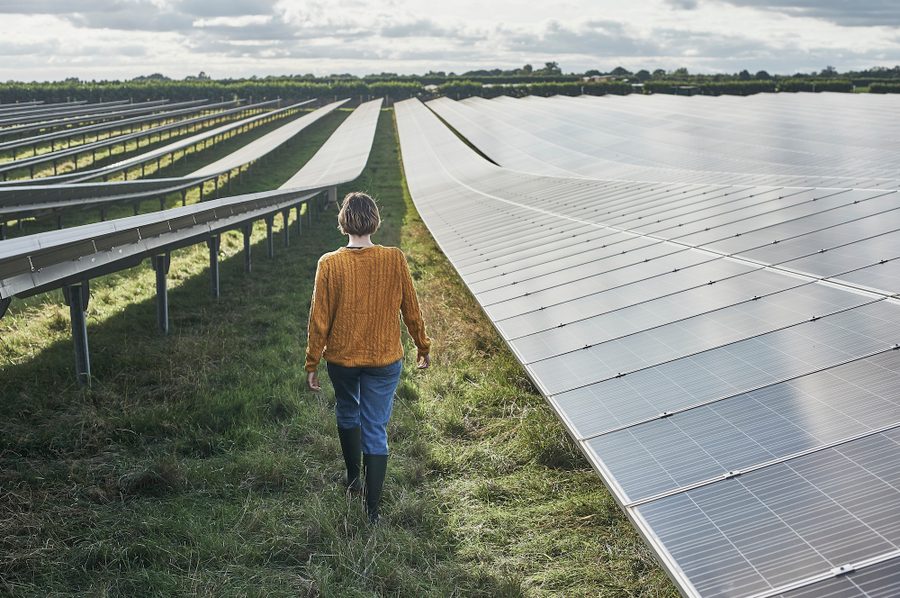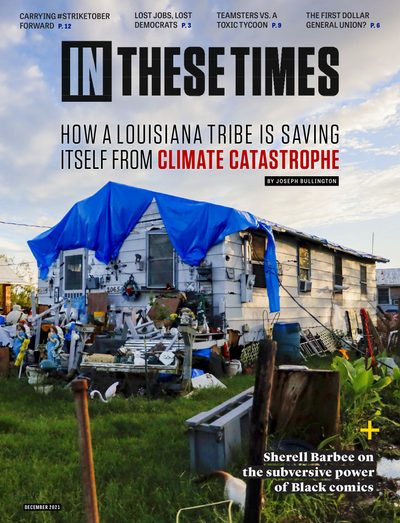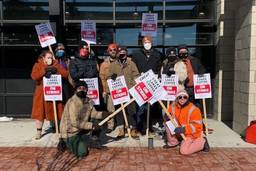The Small Towns Rejecting Solar Farms
Residents are split over the largest solar farm in Wisconsin moving in next door
Hannah Faris

CAMBRIDGE, WIS. —A bright yellow billboard sits at the entrance of rural Cambridge with bold letters reading “STOP KOSHKONONG SOLAR.”
The Koshkonong Solar Energy Center is a proposed 300-megawatt solar farm that would span 2,400 acres and power almost 80,000 households on a sunny day. Cambridge, a bedroom community of about 1,600 outside Madison, would become host to the largest solar farm in Wisconsin. The electricity would be exported to nearby cities, including Madison and Milwaukee.
The plunging cost of solar equipment, coupled with farmers looking to sell their land and a lack of state restrictions, have created this solar wave. According to Midwest Energy News, at least 30 utility-scale solar farms are in development in Wisconsin. While many environmental advocates, farmers and residents support the infrastructure, a small opposition is growing.
“We are not anti-solar,” writes Mark Cook, chairman of nearby Christiana, in a letter to the Cambridge Village Board. “We are however interested in fairness and protecting our rural character.” Cook urges the village board not to drop its ongoing opposition; the solar farm can only move forward if it does.
Dozens of property owners near the proposed solar field allege the proximity to Cambridge’s western border causes visual blight, reduces prime farmland and halts the potential expansion of Cambridge during the project’s 35 – 50 year span. Others fear Cambridge landfills will ultimately end up dealing with more than a million defunct solar panels.
Koshkonong is a project of Invenergy, a multinational energy mega-developer. In Cambridge, as well as nearby Christiana and Deerfield, Invenergy is leasing roughly 6,300 acres from farmers for the solar fields and a 165-megawatt lithium battery storage facility, then selling them to three Wisconsin utility companies for nearly $650 million.
When Invenergy first came to Cambridge, according to Tara Vasby, a resident opposing the project, the solar farm proceeded “under the cover of darkness.” Aidan O’Connor, renewable project developer at Invenergy, says the company began contacting farmers in late 2018. As a private developer, though, it was not required to disclose its plans until its formal application to Wisconsin’s Public Service Commission, which was made public in April. By then, Vasby claims, it was too late to make changes.
“The piece that upsets people the most is that there is no recourse for, and no honest dialogue with, Invenergy,” Vasby says, who would have solar panels 20 feet from her property. Vasby says she wants smaller-scale solar projects — such as 60,000 solar panels on private roofs rather than 60,000 on farmland — and thinks this project is too large for her rural community.
For farmers like Duane and Tina Hinchley, leasing land for solar fields may offer a financial lifeline. The Hinchleys, who operate a mid-sized dairy and hay farm on the outskirts of Cambridge, have leased approximately 1,000 acres (of their 2,600) to Invenergy for the next 25 years.
“Solar’s another crop,” as Duane Hinchley sees it. Trade wars, supply shocks and fluctuating prices have strained family and small farms for decades, which are in steady decline nationwide. According to the U.S. Department of Agriculture, more than 30,000 Wisconsin farms had annual product sales or subsidies totaling less than $10,000 in 2017. Wisconsin leads the country in farm bankruptcies.
“I’ve lived my whole life doing this, and it’d be nice to have some stability,” Hinchley says.
According to Heather Allen, executive director of renewable energy nonprofit Renew Wisconsin, the debate has not focused enough on the project’s “suite of benefits” for the community. Solar fields have a lower environmental impact than other developments, Allen says. “You can create habitat for pollinators that can benefit nearby farms. You can protect soil from erosion. You can protect water quality by reducing runoff.”
Additionally, the county and townships would split $4,000 for each megawatt generated annually through a revenue-sharing program, equaling $1.2 million per year to local governments over the next 30 years. Because utility companies are exempt from local property taxes, Invenergy has also offered to compensate school districts for the lost revenue.
As of 2020, 39% of Wisconsin’s electricity is generated by coal-fired plants, with less than 1% solar-generated. If approved, Koshkonong could double this output by 2023.
In May, the International Energy Agency reported that, to reach net-zero carbon emissions by 2050, the pace of wind and solar development needs to be quadrupled globally. That would mean building about four Koshkonongs every day for the next decade.
Hannah Faris is associate editor at The Wisconsin Idea, an independent reporting project of People’s Action Institute, Citizen Action of Wisconsin Education Fund and In These Times.








